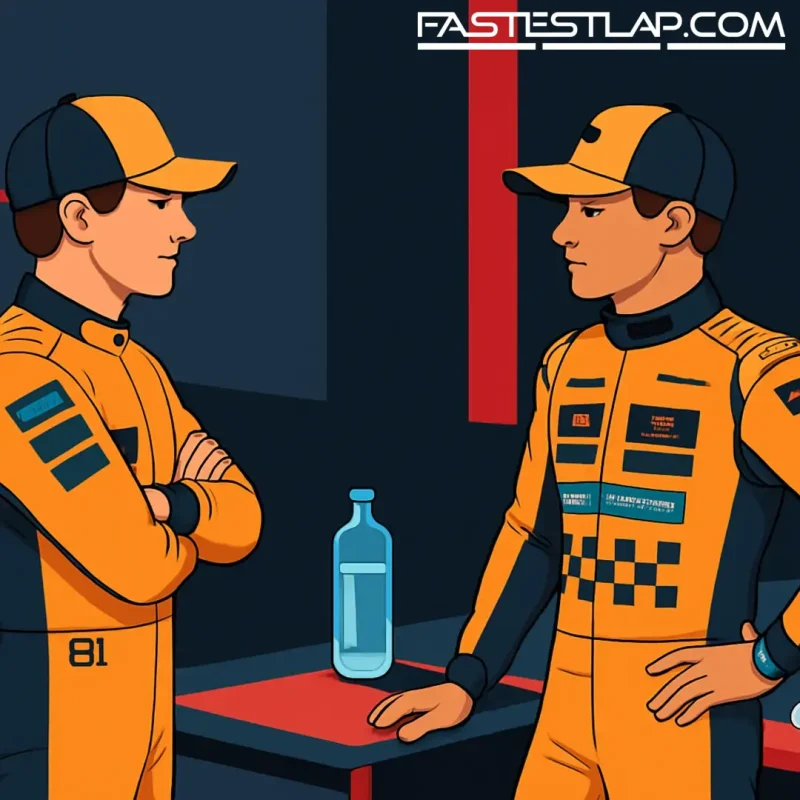McLaren’s friendly fire at Marina Bay has turned into the season’s spiciest subplot. Oscar Piastri and Lando Norris banged wheels on lap one in Singapore, Norris mugged his teammate for track position, and everyone’s been arguing about intent ever since. Jenson Button reckons it was just racing. Martin Brundle thinks the dynamic has shifted for good. And back at Woking, the “papaya code” suddenly feels more like guidelines than rules.
Here’s what happened. Piastri, leading the championship coming in, got pinched behind Max Verstappen off the start. Norris, who launched superbly from fifth, arrived with momentum and a gap that wasn’t really a gap. He checked up to avoid the Red Bull and slid into the side of the sister McLaren at Turn 3. Norris came out ahead, Piastri had a brush with the wall, and the radio got frosty.
“That wasn’t very team-like,” Piastri vented to engineer Tom Stallard. “Are we cool with Lando just barging me out of the way?” There was no intervention from the pit wall. The call from McLaren was effectively: sort it out yourselves.
They did, to a point. Norris carried on to the podium in third, Piastri followed him home in fourth. The net effect: Norris trimmed Piastri’s championship cushion to 22 points. For a team that’s spent two years carefully managing an even-handed, no-drama pairing, Singapore was the first real sign the title fight might demand something harder-edged.
Button, ever pragmatic, dismissed the outrage. He told Sky F1 it was low grip, a snap of oversteer, and not much more. In his words, if he’s Piastri, the takeaway is simple: “My teammate got the better of me there,” end of story. That’s the racer’s code talking—lap one, elbows out, no quarter.
Brundle, meanwhile, smelled a turning point. Writing in his column, the former driver suggested the relationship between the two McLaren men will “irrevocably change” now. Whether that’s melodramatic or bang-on depends on how you read the team’s silence in the moment. McLaren didn’t issue orders, didn’t reverse positions, didn’t penalize the podium. That’s a tacit endorsement of the hard stuff, and a clear message: keep it on the island and you can fight.
Guenther Steiner, never one to mince words, told the Red Flags podcast it’s “gas” for now—let them race—until the situation inevitably forces team rules. He stopped short of predicting a designated number one, but you could hear him winking through the headphones. Title fights have a way of making the choices for you.
Strip away the drama and Singapore was a classic first-lap pinch. Verstappen’s presence created a chessboard that changed by the half-second. Norris attacked, Piastri defended, the track tightened. If it’s not your teammate, nobody calls it controversial. But it is your teammate, and they’re the two drivers most likely to win McLaren its first drivers’ crown since 2008. Context elevates contact.
The intriguing bit is psychological, not tactical. Piastri’s radio fury quickly cooled into a united front after the race—he said the “intentions are very well-meaning”—but heat leaves marks. Norris, for his part, didn’t sound remotely apologetic; he sounded like a driver in a title fight doing title fight things. That tension doesn’t break a team, but it does reset the risk tolerance.
So what now? Expect McLaren to lean on its usual line: race freely, don’t be stupid. The difference, after Singapore, is what “stupid” looks like. The next time Norris dives late or Piastri squeezes hard, who lifts first? That’s where championships are won—with instincts that can’t be coached and margins that can’t be managed from the pit wall.
It’s also where McLaren’s leadership gets tested. Andrea Stella’s had a dream scenario: two fast drivers, zero toxicity, all boats rising. But the arithmetic is getting real. A 22-point gap isn’t a moat, it’s a weekend. If the papaya cars keep locking out the sharp end, there will come a Sunday where one strategy call decides whose race is sacrificed. That’s when “even-handed” becomes “situational,” and situational has a way of sticking.
There’s a romantic notion that teammates can sort a title duel cleanly. Sometimes they can. More often, they brush the edges, then the edges fray. None of this is terminal for McLaren. In fact, there’s something healthy about a team letting its drivers breathe a little fire. But Singapore was a line in the sand. Norris crossed it first, Piastri didn’t like it, and the standings tightened.
Call it the Marina Bay marker. From here on, the papaya pair aren’t just teammates—they’re rivals with identical machinery and everything to lose. That’s terrific news for the rest of us. For McLaren, it’s time to decide how much chaos they can tolerate in pursuit of a very big prize.




